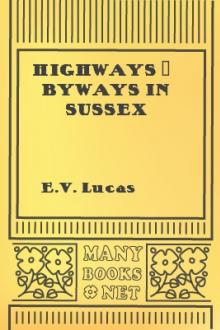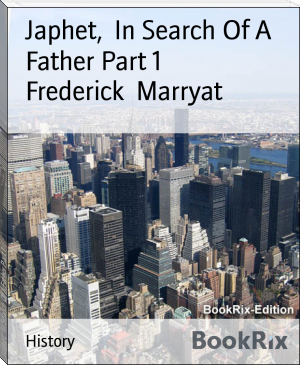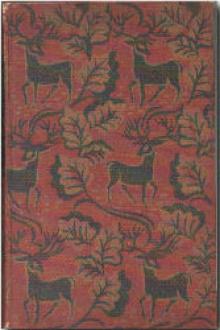Highways & Byways in Sussex by E. V. Lucas (e reader pdf best .txt) 📕

- Author: E. V. Lucas
- Performer: -
Book online «Highways & Byways in Sussex by E. V. Lucas (e reader pdf best .txt) 📕». Author E. V. Lucas
We have some glimpses of old Chichester in the reminiscences (about 1720-1730) of James Spershott, a Chichester Baptist Elder, who died in 1789, aged eighty. I quote a passage here and there from his paper of recollections printed in the Sussex Archæological Collections:—
"Spinning of Household Linnen was in use in most Families, also making their own Bread, and likewise their own Household Physick. No Tea, but much Industrey and good Cheer. The Bacon racks were loaded with Bacon, for little Porke was made in these times. The farmers' Wifes and Daughters were plain in Dress, and made no such gay figures in our Market as nowadays. At Christmas, the whole Constellation of Pattypans which adorn'd their Chimney fronts were taken down. The Spit, the Pot, the Oven, were all in use together; the Evenings spent in Jollity, and their Glass Guns smoking Top'd the Tumbler with the froth of Good October, till most of them were slain or wounded, and the Prince of Orange, and Queen Ann's Marlborough, could no longer be resounded...."
Here is Mr. Spershott's account of a Chichester calamity:—"Jno. Page, Esq., native of this city, coming from London to Stand Candidate Here, a great number of voters went on Horseback to meet him. Among the rest Mr. Joshua Lover, a noted School Master, a sober man in the general but of flighty Passions. As he was setting out, one of his Scollers, Patty Smith (afterwards my Spouse) asked him for a Coppy, and in haste he wrote the following:—
"He set off in High Carrier, and turning down Rooks's Hill before the Sqr., rideing like a madman To and fro, forward and backward Hallooing among the Company, the Horse at full speed fell with him and kill'd him. A Caution to the flighty and unsteady; and a verification of his Coppy." Again: "Robt. Madlock, a most Prophane Swarer, being Employ'd in Cleaning the outside of the Steeple," fell, owing to a breaking rope, and soon after died. Mr. Spershott adds: "A warning to Swarers." Another entry states: "In my younger years there were many very large corpulent Persons in the City, both of Men and Women. I could now recite by name between twenty and thirty, the great part of that number so Prodigious that like other animals Thoroughly fatted, they could hardly move about."
One of Chichester's epitaphs runs thus:—
I have left until the last the prettiest thing in this city of comely streets and houses—St. Mary's Hospital, at the end of Lion Street (out of North Street): the quaintest almshouse in the world. The building stands back, behind the ordinary houses, and is gained by a passage and a courtyard. You then enter what seems to be a church, for at the far end is an altar beneath an unmistakably ecclesiastical window. But when the first feeling of surprise has passed, you discover that there is only a small chancel at the east end of the building, on either side of which are little dwellings. Each of these is occupied by a nice little old woman, who has two rooms, very minute and cosy, with a little supply of faggots close at hand, and all the dignity of a householder, although the occupant only of an infinitesimal toy house within a house. How do they agree, one wonders, these little old ladies of a touchy age under their great roof?
Different accounts are given of the origin of St. Mary's Hospital. Mr. Lower says that it was founded in 1229 for a chaplain and thirteen bedesmen. In 1562 a warden and five inmates were the prescribed occupants. Now there are eight sets of rooms, each with its demure tenant, all of whom troop into the little chapel at fixed hours. Mrs. Evans, sacristan, who does the honours, would tell me nothing as to the process of selection by which she and the seven other occupants came to be living there; all that she could say was that she was very happy to be a Hospitaller, and that by no possibility could one of the little domiciles ever fall to me.
The Ruined Nave of Boxgrove
The Ruined Nave of Boxgrove. CHAPTER V CHICHESTER AND THE HILLS.Goodwood—The art of being a park—The Cenotaph of Lord Darnley—Boxgrove—Cowper at Eastham—The Charlton Hunt—A famous run—Huntsman and Saint—Present day hunting in Sussex—Mr. Knox's delectable day with his gun—Kingly Bottom—The best white violets—A demon bowler—Two epitaphs.
Chichester may have a cathedral and a history, but nine out of ten strangers know of it only as a station for Goodwood race-course; towards which, in that hot week at the end of July, hundreds of carriages toil by the steep road that skirts the Duke of Richmond and Gordon's park.
Goodwood Park gives me little pleasure. I miss the deer; and when the first park that one ever knew was Buxted, with its moving antlers above the brake fern, one almost is compelled to withhold the word park from any enclosure without them. It is impossible to lose the feeling that the right place for cattle—even for Alderneys—is the meadow. Cows in a park are a poor makeshift; parks are for deer. To my eyes Goodwood House has a chilling exterior; the road to the hill-top is steep and lengthy; and when one has climbed it and crossed the summit wood, it is to come upon the last thing that one wishes to find in the heart of the country, among rolling Downs, sacred to hawks and solitude—a Grand Stand and the railings of a race-course! Race-courses are for the outskirts of towns, as at Brighton and Lewes; or for hills that have no mystery and no magic, like the heights of Epsom; or for such mockeries of parks as Sandown and Kempton. The good park has many deer and no race-course.
And yet Goodwood is superb, for it has some of the finest trees in Sussex within its walls, including the survivors of a thousand cedars of Lebanon planted a hundred and fifty years ago; and with every step higher one unfolds a wider view of the Channel and the plain. Best of these prospects is, perhaps, that gained from Carne's seat, as the Belvedere to the left of the road to the racecourse is called; its name deriving from an old servant of the family, whose wooden hut was situated here when Carne died, and whose name and fame were thus perpetuated. The stones of the building were in part those of old Hove church, near Brighton, then lately demolished.
In Goodwood House, which is shown on regular days, are fine Vandycks and Lelys, relics of the two Charles', and above all the fascinatingly absorbing "Cenotaph of Lord Darnley," a series of scenes in the life of that ill-fated husband. It may be said that among all the treasures of Sussex there is nothing quite so interesting as this.
Boxgrove Priory Church
Boxgrove Priory Church.Leaving Chichester by East Street (or Stane Street, the old Roman road to London) one comes first to West Hampnett, famous as the birthplace, in 1792, of Frederick William Lillywhite, the "Nonpareil" bowler, whom we shall meet again at Brighton. A mile and a half beyond is Halnaker, midway between two ruins, those of Halnaker House to the north and Boxgrove Priory to the south. Of the remains of Halnaker House, a Tudor mansion, once the home of the De la Warrs, little may now be seen; but Boxgrove is still very beautiful, as Mr. Griggs' drawings prove. The Priory dates from the reign of Henry I., when it was founded very modestly for three Benedictine monks, a number which steadily grew. Seven Henries later came its downfall, and now nothing remains but some exquisite Norman arches and a few less perfect fragments. Boxgrove church is an object of pilgrimage for antiquaries and architects, the vaulting being peculiarly interesting. At the Halnaker Arms in 1902 was a landlady whom few cooks could teach anything in the matter of pastry.
The next village on Stane Street, or rather a little south of it, about two miles beyond Halnaker, is Eartham; which brings to mind William Hayley, the friend and biographer of Cowper and the author of The Triumphs of Temper, perhaps the least read of any book that once was popular. Hayley succeeded his father as squire of Eartham; here he entertained Cowper and other friends; here Romney painted. When need came for retrenchment, Hayley let Eartham to Huskisson, the statesman, and moved to Felpham, on the coast, where we shall meet with him again. Cowper's occupations upon this charming Sussex hillside are recorded in Hayley's account of the visit: "Homer was not the immediate object of our attention while Cowper resided at Eartham. The morning hours that we could bestow on books were chiefly devoted to a complete revisal and correction of all the translations, which my friend had finished, from the Latin and Italian poetry of Milton; and we generally amused ourselves after dinner in forming together a rapid metrical version of Andreini's Adamo. But the constant care which the delicate health of Mrs. Unwin required rendered it impossible for us to be very assiduous in study, and perhaps the best of all studies was to promote and share that most singular and most exemplary tenderness of attention with which Cowper incessantly laboured to counteract every infirmity, bodily and mental, with which sickness and age had conspired to load this interesting guardian of his afflicted life.... The air of the south infused a little portion of fresh strength into her shattered frame, and to give it all possible efficacy, the boy, whom I have mentioned, and a young associate and fellow student of his, employed themselves regularly twice a day in drawing this venerable cripple in a commodious garden-chair round the airy hill of Eartham. To Cowper and to me it was a very pleasing spectacle to see the benevolent vivacity of blooming youth thus continually labouring for the ease, health, and amusement of disabled age."
The poet and Mrs. Unwin, after much trepidation and doubt, had left Weston Underwood on August 1, 1792; they slept at Barnet the first night, Ripley the next, and were at Eartham by ten o'clock on the third. They stayed till September. Cowper describes Hayley's estate as one of the most delightful pleasure grounds in the world. "I had no conception that a poet could be the owner of such a paradise, and his house is as elegant as his scenes are charming." The poet, apart from his rapid treatment of Adamo, did not succeed independently in attaining to Hayley's fluency among these surroundings. "I am in truth so unaccountably local in the use of my pen," he wrote to Lady Hesketh, "that, like the man in the fable, who could leap well nowhere but at Rhodes, I seem incapable of writing at all except at Weston." Hence the only piece that he composed in our county was the epitaph on Fop, a dog belonging to Lady Throckmorton. But while he was at Eartham Romney drew his portrait in crayons.





Comments (0)